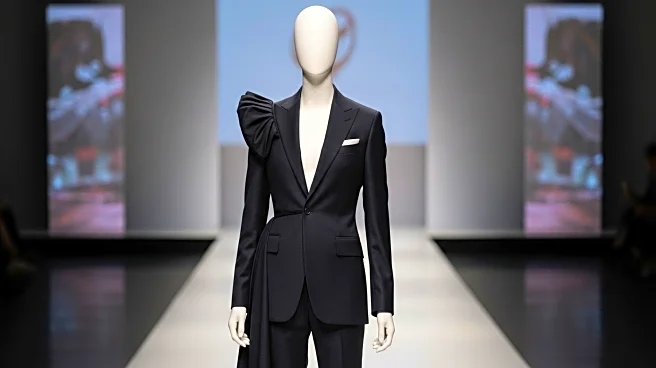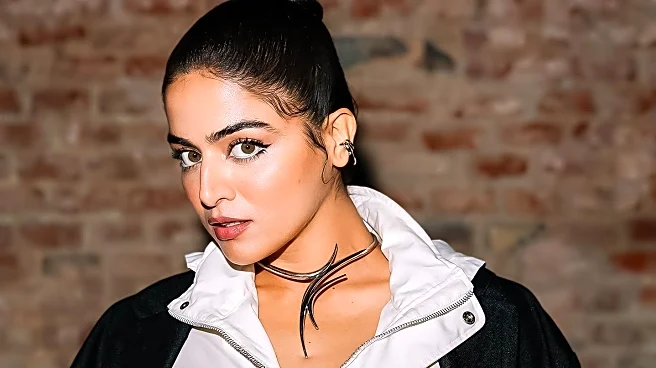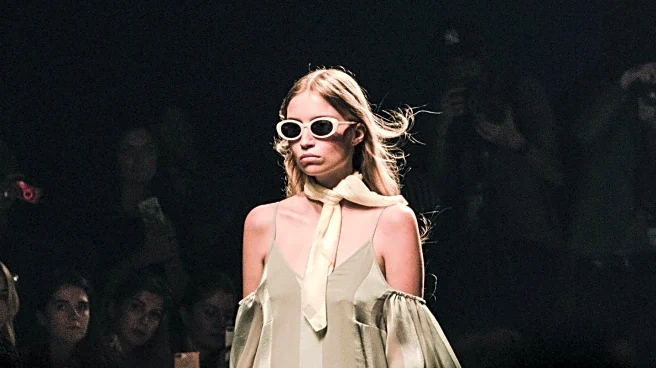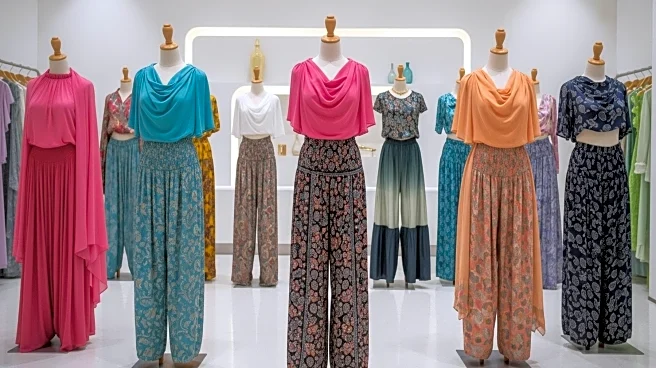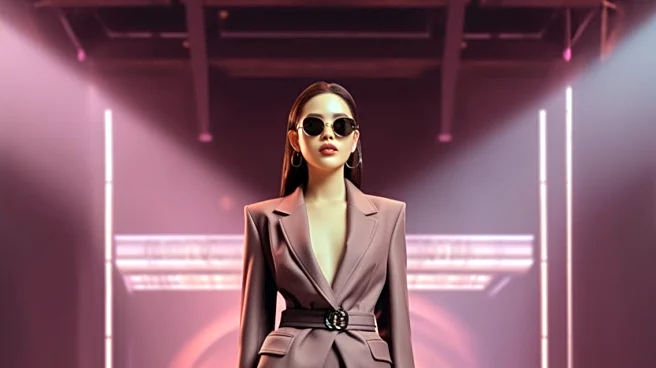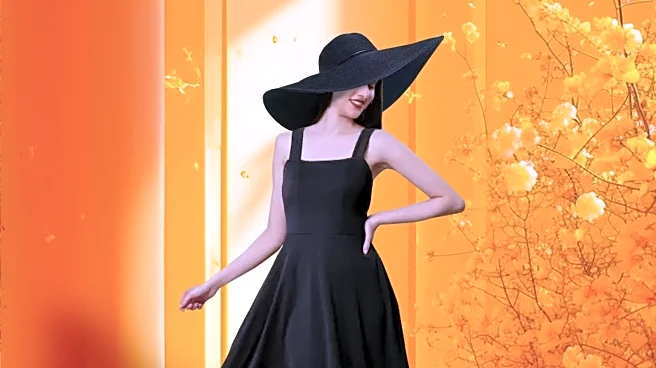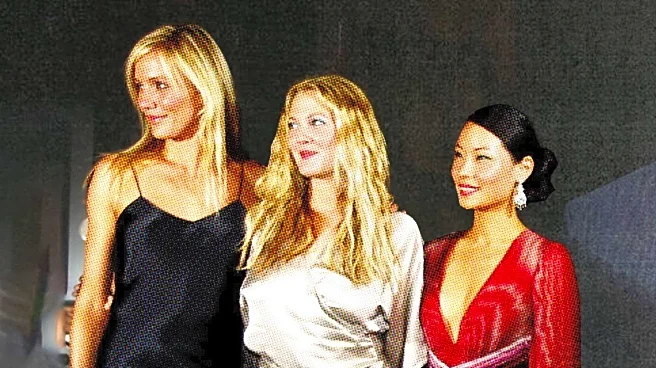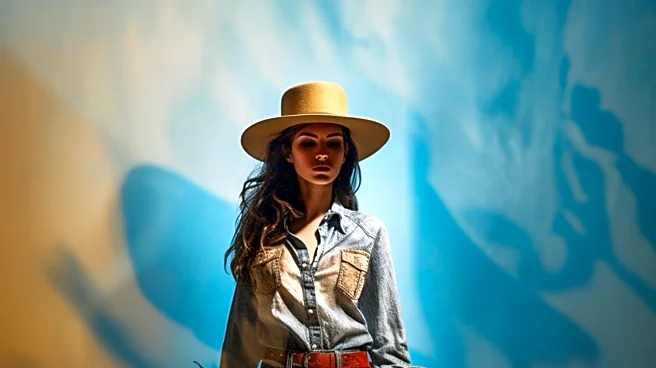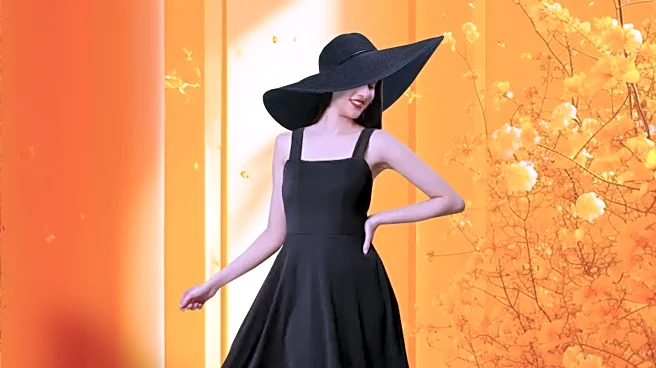What's Happening?
Willy Chavarria, known for his politically charged menswear, has unveiled his first full womenswear collection at a salon-style presentation during New York Fashion Week. The event took place at Printemps, where Chavarria showcased his Spring/Summer 2026 collection. The presentation was designed to evoke the original couture shows, featuring VIP clients and media members. The collection includes a range of easy-to-wear streetwear, chic evening pieces, and couture, with prices ranging from $250 to $2,000. The collection has been picked up by major retailers such as Bergdorf Goodman and Net-a-Porter, and will be available in stores by January 2026. Chavarria's shift to womenswear marks a departure from his previous politically themed shows, focusing instead on expanding his commercial reach.
Why It's Important?
The debut of Willy Chavarria's womenswear collection signifies a strategic expansion for the designer, responding to department stores' demand for broader offerings. This move could potentially increase Chavarria's market presence and sales, as evidenced by the unexpected commercial success of the collection. By shifting away from political themes, Chavarria may attract a wider audience, appealing to consumers who prioritize fashion over activism. This development highlights a trend in the fashion industry where designers balance artistic expression with commercial viability, potentially influencing other designers to reconsider their approach to politically themed collections.
What's Next?
The collection's success could lead to further expansion into womenswear for Willy Chavarria, as he plans to let the market grow organically. Retailers and consumers will likely respond to the collection's availability in January 2026, potentially influencing future designs and collaborations. Chavarria's approach may inspire other designers to explore new markets and adapt their strategies to meet consumer demands. The fashion industry will be watching closely to see how Chavarria's shift impacts his brand and the broader market.
Beyond the Headlines
Chavarria's move away from political themes raises questions about the role of activism in fashion. As designers navigate the balance between political expression and commercial success, the industry may see shifts in how fashion is used as a platform for social change. This development could spark discussions on the ethical responsibilities of designers and the impact of fashion on cultural and political discourse.
